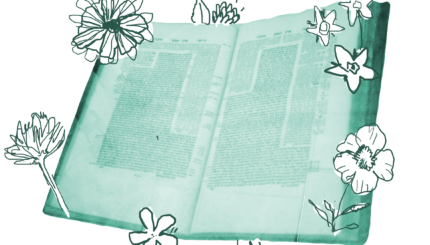Jewish history traditionally has been associated with the history of textual transmission. In other words, the story of the Jewish people is often told in conjunction with the history of Jewish texts.
This approach over the centuries has become so prevalent that in many histories, the accepted periodization of Jewish texts is utilized as the historical template for Jewish history itself. Historians divide Jewish history into the periods of the Bible, the Tannaim (the rabbis of the Mishnah), Amoraim (the rabbis of the Gemara), Saboraim (the editors of the Talmud), Geonim (Babylonian leaders of the eighth through tenth centuries), Rishonim (the earlier commentators on the Talmud), and Aharonim (the later commentators to the present).
The Textual Eras
While there is no exact literary or chronological barrier that separates each era, we can roughly sketch each period. The Biblical period generally refers to the history of the Jewish people that is narrated in the Bible itself, from the beginning of Israelite history (circa 18th century BCE) through the restoration period in the fifth century BCE.
The next significant literary period is the Tannaitic period (70 CE-220 CE). Following the destruction of the Temple, the Pharisaic leadership reorganized itself as the Rabbinic movement in Yavneh, collecting and discussing the legal materials that were eventually included in works like the Mishnah and Tosefta. In the Amoraic period, the Palestinian and Babylonian rabbinic academies flourished. Their deliberations upon the Mishnah were finally collected and edited in the fifth century, creating the Talmud.
 The anonymous Saboraim added to and further edited the text during the next century. Almost nothing is known about this period, and what distinguishes this period from the earlier Amoraic and later Geonic periods is still unclear. The Geonim, the heads of the Babylonian academies, expanded the authority of the Talmud during the eighth through the tenth centuries. While most of the Geonim were involved in the writing of halakhic (legal) responsa and takkanot (decrees for various communities), they also created new rabbinic genres such as the halakhic code, the biblical and Talmudic commentaries, and even Jewish philosophy. By the end of the Geonic period, generally associated with the death of Hai Gaon (1038), the authority of the Talmud had been established in most Jewish communities throughout the world.
The anonymous Saboraim added to and further edited the text during the next century. Almost nothing is known about this period, and what distinguishes this period from the earlier Amoraic and later Geonic periods is still unclear. The Geonim, the heads of the Babylonian academies, expanded the authority of the Talmud during the eighth through the tenth centuries. While most of the Geonim were involved in the writing of halakhic (legal) responsa and takkanot (decrees for various communities), they also created new rabbinic genres such as the halakhic code, the biblical and Talmudic commentaries, and even Jewish philosophy. By the end of the Geonic period, generally associated with the death of Hai Gaon (1038), the authority of the Talmud had been established in most Jewish communities throughout the world.
The Rishonim adapted the Talmudic tradition to the various social and economic circumstances that were locally prevalent. Talmudic and Biblical commentary as well as legal codes reached their literary apex. The most famous Rishonimwere undoubtedly Maimonides, known for his works on halakhah and philosophy, and Rashi, known for his magisterial commentaries on the Bible and Talmud.
The demarcation between the period of Rishonim and Aharonim is generally associated with the publication of the Shulhan Arukh of R. Yosef Caro (1565). By the end of the 16th century, the Shulhan Arukhhad gained universal acceptance as the starting place for subsequent halakhic decision, and theAharonim wrote supercommentaries upon it.
Benefits
The use of the literary periodization has three main benefits:
1) Considering how Jews have been divided by language and geography, the fact that there has been a (fairly) normative legal and religious discourse for Jews throughout the Diaspora is extremely significant. Only these shared elements of a common culture allow one to speak of “Jewish history.”
2) The use of this periodization has also been helpful when describing the contours of legal and intellectual development within Judaism. While Jewish theologians see the progress of generations as a decline, historians have identified the subtle and important ways in which each period can be seen to mark important shifts in religious development. The shift from the Biblical to the Tannaitic period saw a decline in prophetic experience as a source for religious practice. The advent of printing, which roughly coincides with the shift from the Rishonim to the Aharonim, can be seen as leading to a change from creative participation in the Talmudic process to commentary upon the Talmud.
3) One last benefit of this approach is that this periodization is Judaism’s own. Jewish texts recognize an internal periodization; the Talmud uses different terminology to refer to Tannaim and Amoraim. As opposed to imposing an external periodization based on which imperial power had authority over the most Jews (for example, the Persian period, the Roman period, the Byzantine period), employing an internal, organic model may reflect the ethos of the people themselves.
Difficulties
Nevertheless, the utilization of a literary periodization also creates difficulties. This is true not only for political or social history, but even when describing Jewish literary history. First, it is problematic to talk about the religious development of Judaism using categories and collections that are themselves controversial. The Bible is essentially an anthology of writings spanning well over a thousand years. When does the Biblical period end? The setting of the book of Daniel is the sixth century BCE, but most scholars date it to the Hasmonean revolt (167 BCE), well after the last events described in the Bible.
Second, how much of the Jewish people do certain literary works reflect? For example, the citizens living in the northern kingdom of Israel may have piously worshipped at the local shrine of Bet El, although the author of the Book of Kings called it idolatrous, undermining the centrality of the Temple cult in Jerusalem. The lives of these Jews are not reflected in the Bible. Similarly, the Mishnah became the bedrock of later Rabbinic tradition, but when it was written, it probably reflected the interests of a small class of Jewish scholars.
Third, many books written by Jews, which do, in fact, reflect the cultural or historical experience of at least some Jews, were not seen as sacred or even preserved by Jews. The books of the Apocrypha, the writings of Dead Sea Sect, the works of Josephus and Philo are all of tremendous value to historians of ancient Judaism. But no one speaks of an Apocyphal period or a Qumran period. Some Christian scholars call this the intertestamental period, an appellation that would not fit a Jewish history (even though the Christian Testament can be used for Jewish history!).
A Jewish literary periodization either creates a gap between the Bible and the Mishnah or pushes the “Rabbinic” period ahead several centuries. The latter option, creating a Rabbinic period that lasted from the third or second century BCE to the sixth century CE would, however, ignore the watershed of the destruction of the Second Temple.
This leads to a fourth difficulty: The literary division may create the impression of successive evolution and development, but the history of the Jewish people is marked by frequent disruptions and migrations that do not necessarily coincide with the literary divisions. The first crusade of 1099 and the subsequent 12th century in general was devastating for the Franco-German communities, and is perceived as the decline in the status of Jews in Europe. The crusades are an historical turning point, yet according to a literary periodization, the first crusade lies firmly in the period of the Rishonim. The history of texts fails to take note of the significance of these events for the Jews of Europe.
Fifth, a seamless textual tradition limits which communities are the focus of historical study. Next to the history of the Holocaust, the single most popular topic in modern Jewish history is Germany. Nevertheless, the urban Berlin haskalah (enlightenment) in the early 19th century reflects little upon the events in other places in the Jewish world. Yet the secularization of Germany and its centrality for the modern Jewish experience tends to color or overshadow other narratives of the modern Jewish experience, and most significantly, the history of Jews in Arab lands.
Sixth and finally, a perception of a common literary discourse that may or may not have existed in earlier times, has certainly declined in the modern period. The rise of science, the growth of Hasidism, modernization, and emancipation, and the explosion of published materials have led to radical divisions between different Jewish communities and in the texts that those Jewish communities hold sacred. Although the Bible and Talmud still influence modern Jewish literature so that scholars can refer to modern Hebrew literature as “midrashic,” many Jews no longer look to the ancient books as guides for normative behavior.
The diverse paths Jews have chosen and the impact of modernization and secularization make it extremely difficult to talk of a common literary inheritance in the modern age. Could any group of modern Jews make a claim that a particular body of literature marks a new period in Jewish history? While Jews have undoubtedly maintained an ethnic identity, the basis for that identity can no longer be said to be rooted in a common set of texts.
Mishnah
Pronounced: MISH-nuh, Origin: Hebrew, code of Jewish law compiled in the first centuries of the Common Era. Together with the Gemara, it makes up the Talmud.
Talmud
Pronounced: TALL-mud, Origin: Hebrew, the set of teachings and commentaries on the Torah that form the basis for Jewish law. Comprised of the Mishnah and the Gemara, it contains the opinions of thousands of rabbis from different periods in Jewish history.


